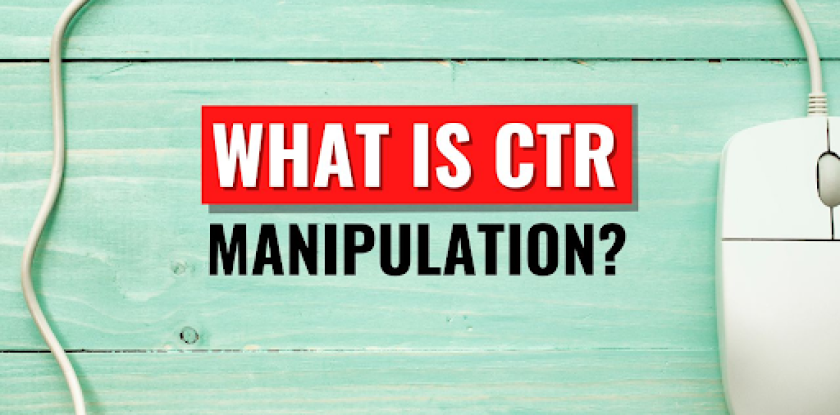Understanding GMB CTR Manipulation for Better Local Search Positions
Ideal Practices for CTR Adjustment in Digital Marketing
In the affordable landscape of electronic advertising and marketing, understanding and controling Click-Through Rate (CTR) is crucial for maximizing project performance. Ideal methods, such as crafting engaging headlines and employing clear calls-to-action, can substantially improve interaction. The role of A/B screening in identifying reliable techniques can not be overstated. Nonetheless, the subtleties of target market behavior and choices frequently continue to be underexplored, providing both obstacles and opportunities. What particular strategies can marketing experts utilize to additional fine-tune their strategy and make certain sustained success?
Recognizing Click-Through Price
Recognizing click-through rate (CTR) is vital for examining the efficiency of electronic advertising and marketing campaigns. CTR is a vital performance indication that gauges the percent of individuals that click on a details link out of the overall number of customers who watch a website, ad, or email . It functions as a critical statistics for evaluating the interaction level of your audience and the total success of advertising initiatives.
A high CTR indicates that the material reverberates with the audience, prompting them to take action. Conversely, a reduced CTR may signal that the material is not enticing or appropriate, necessitating a reassessment of the advertising method. Factors affecting CTR consist of the top quality of the web content, the positioning of links, and the total individual experience on the system.

Crafting Engaging Headlines
Crafting compelling headings is important for capturing target market focus and driving higher click-through rates (CTR) A well-structured heading acts as the first factor of call between your material and prospective readers, making it vital to develop a strong preliminary impact. - CTR Manipulation
To begin, use clear and engaging language that lines up with your target audience's demands and passions. Including effective adjectives and activity verbs can stimulate inquisitiveness and motivate clicks. In addition, headlines that pose concerns or present solutions to common issues can additionally tempt readers, as they assure useful insights.
Employing numbers and listings in headlines can likewise improve allure. For circumstances, headings like "5 Tips for Boosting Your CTR" are not just specific yet additionally suggest actionable and absorbable web content. Consider the length of your headings; succinct headlines, ideally in between 50-70 characters, are easier to check out and more likely to be shared throughout various platforms.
Finally, A/B testing various heading variants can give important information on what resonates most with your audience. By constantly refining your approach based on performance metrics, you can establish headlines that drive visit our website considerable interaction and improve total CTR.
Using Effective Calls-to-Action
Using the power of effective calls-to-action (CTAs) is crucial for directing customers towards desired outcomes and boosting click-through prices. A well-crafted CTA acts as a critical aspect in digital advertising and marketing, routing audience habits and motivating involvement.
To make best use of effectiveness, CTAs ought to be clear, succinct, and action-oriented. Usage strong, powerful verbs that inspire immediate activity, such as "Download," "Subscribe," or "Get going." In addition, the language must reverberate with the target audience, reflecting their requirements and wishes.

Additionally, producing a feeling of seriousness can substantially boost the efficiency of CTAs. Expressions like "Minimal Time Deal" or "Join Now to Safeguard Your Area" can motivate individuals to act quickly.
A/B Examining Methods
Executing A/B testing methods is critical for enhancing electronic marketing initiatives and boosting click-through rates. This approach involves comparing two versions of a digital asset, such as an e-mail, touchdown web page, or ad, to figure out which variant executes much better in terms of individual engagement. By systematically varying elements such as headings, photos, shades, and call-to-action switches, online marketers can gather empirical data to notify their decisions.
To effectively perform A/B screening, it is vital to develop clear objectives and essential efficiency indicators (KPIs) in advance. This makes sure that the tests are focused and outcomes are quantifiable. In addition, a sufficiently large example size is essential to achieve statistically substantial outcomes, avoiding the mistakes of arbitrary variant.
Timing is another critical aspect; tests need to be run enough time to record varied user actions but not so extensive that external influences alter outcomes. Keeping a constant user experience throughout both versions helps separate the effect of the checked aspect. By adopting these A/B screening strategies, online marketers can make informed navigate here choices that not only enhance click-through rates but additionally enhance general campaign efficiency.
Analyzing Efficiency Metrics
Examining efficiency metrics is essential for recognizing the effectiveness of digital advertising and marketing strategies and making data-driven decisions. By systematically evaluating essential efficiency signs (KPIs) such as click-through rates (CTR), conversion rates, and consumer interaction degrees, online marketers can identify areas for enhancement and enhance their campaigns accordingly.
To efficiently analyze efficiency metrics, it is essential to establish clear goals and criteria that straighten with overall advertising objectives. CTR Manipulation Service. This enables exact contrasts and educated decision-making. Tools such as Google Analytics, heatmaps, and A/B testing systems can give vital understandings into individual habits and project performance

Conclusion
In final thought, reliable adjustment of Click-Through Rate (CTR) in electronic advertising and marketing necessitates the implementation of strategic techniques. Crafting engaging headlines, utilizing persuasive calls-to-action, and performing A/B testing are vital elements.
In the affordable landscape of electronic marketing, understanding and adjusting Click-Through Rate (CTR) is critical for enhancing project performance.Comprehending click-through price (CTR) is vital for assessing go to this website the efficiency of digital marketing campaigns. CTR Manipulation.In the context of electronic advertising, optimizing CTR can lead to enhanced conversion rates and better return on financial investment. Eventually, understanding CTR is a fundamental aspect of driving successful electronic advertising and marketing efforts and guaranteeing that projects achieve their preferred goals
In conclusion, reliable manipulation of Click-Through Rate (CTR) in electronic advertising demands the execution of tactical methods.